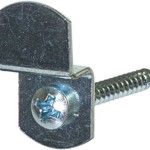How to Mirror Your iPad Pro to Apple TV
Mirroring an iPad Pro to an Apple TV allows users to display the iPad's screen content on a larger television screen. This feature is useful for presentations, watching movies, playing games, and sharing photos with a broader audience. Several methods facilitate this screen mirroring functionality, each with its own set of advantages.
AirPlay: AirPlay is Apple's proprietary wireless streaming technology. It provides a seamless and straightforward way to mirror an iPad Pro to an Apple TV. Both devices must be connected to the same Wi-Fi network for AirPlay to function.
To initiate AirPlay mirroring, users should swipe down from the top right corner of the iPad Pro's screen to access Control Center. The AirPlay icon, which resembles a TV with an upward-pointing triangle, should then be selected. A list of available AirPlay devices on the network will appear. Selecting the desired Apple TV from this list initiates the mirroring process.
Once connected, the iPad Pro's screen content will be mirrored on the television connected to the Apple TV. To disconnect, simply follow the same steps and select "Stop Mirroring" from the AirPlay menu in Control Center.
AirPlay with Specific Apps: Some applications offer built-in AirPlay functionality. This allows users to stream content directly from the app to the Apple TV without mirroring the entire iPad Pro screen. For example, video streaming apps like Netflix and YouTube offer direct AirPlay controls, often represented by an AirPlay icon within the app's playback interface.
Using app-specific AirPlay can offer advantages in terms of battery life on the iPad Pro, as it doesn't require mirroring the entire screen. It also allows for continued use of the iPad for other tasks while streaming content to the Apple TV.
Troubleshooting AirPlay Connection Issues: Occasionally, users may encounter issues with AirPlay connectivity. Several troubleshooting steps can help resolve these problems. First, verifying that both the iPad Pro and Apple TV are connected to the same Wi-Fi network and that the network is functioning correctly is essential. Restarting both devices can also resolve temporary software glitches that may be interfering with the connection.
If the issue persists, checking for software updates for both the iPad Pro and the Apple TV is recommended. Outdated software can sometimes cause compatibility issues with AirPlay. Users should ensure their devices are running the latest versions of their respective operating systems.
Network congestion can also impact AirPlay performance. Minimizing the number of devices actively using the Wi-Fi network can improve AirPlay stability. If other devices are streaming large amounts of data, it may impact the quality and reliability of the AirPlay connection.
Wired Connection: While AirPlay provides a convenient wireless solution, a wired connection can offer greater stability and reduced latency, which is particularly beneficial for gaming or using the iPad Pro as a secondary display. This method requires a USB-C to HDMI adapter for the iPad Pro and an HDMI cable to connect to the Apple TV.
To establish a wired connection, plug the USB-C end of the adapter into the iPad Pro's charging port and connect the HDMI cable to the adapter and the HDMI input port on the Apple TV. The Apple TV should automatically switch to the input corresponding to the HDMI cable. This method bypasses the need for Wi-Fi and offers a direct, high-bandwidth connection.
Choosing the Right Mirroring Method: The optimal mirroring method depends on the specific use case. For casual media consumption or presentations, AirPlay's wireless convenience is generally sufficient. However, for more demanding applications like gaming where low latency is crucial, or when network connectivity is unreliable, a wired connection is preferable.
Benefits of Mirroring: Mirroring an iPad Pro to an Apple TV offers several benefits. It enhances the viewing experience for media consumption by utilizing a larger screen. It facilitates interactive presentations and demonstrations, allowing for a more engaging audience experience. Furthermore, mirroring simplifies the sharing of photos and videos with a larger group, eliminating the need to crowd around a smaller iPad screen.
Screen Mirroring vs. Casting: While often used interchangeably, screen mirroring and casting are distinct functionalities. Screen mirroring replicates the entire iPad Pro's display on the Apple TV. Casting, on the other hand, typically refers to streaming specific content from an app to the Apple TV, leaving the iPad Pro's screen free for other tasks. Understanding this distinction helps users select the appropriate approach for their needs.
Optimizing Performance: Regardless of the chosen mirroring method, several steps can optimize performance. Closing unnecessary apps on the iPad Pro can free up system resources and improve mirroring responsiveness. Reducing the display brightness on the iPad Pro can also contribute to better battery life during extended mirroring sessions.
Ensuring that the Apple TV is also running the latest software version contributes to a smooth and reliable mirroring experience. Similar to the iPad Pro, unnecessary processes running on the Apple TV could affect its performance. Regularly restarting the Apple TV can help maintain optimal performance.
:max_bytes(150000):strip_icc()/001-how-to-use-airplay-on-the-ipad-4103775-a1f4888463bb4aadb492477c9a0a171d.jpg?strip=all)
How To Use Airplay On The Ipad

How To Mirror Iphone Or Ipad Screen Apple Tv With Airplay Osxdaily

How To Connect An Ipad A Tv Or Display Airplay Adapter

How To Connect Ipad Tv Wireless Apple Airplay Hdmi And Vga Mirror

How To Mirror Your Iphone Or Ipad Screen On Apple Tv A Smart Macrumors

How To Use Apple Airplay Mirror Your Iphone Mac Screen On Tv Roku And More Cnet

How To Connect Your Ipad Pro 9 7 Tv Mobile Fun Blog

Big Screen Viewing How To Connect Your Iphone Or Ipad Tv

Ipad Pro How To Mirror Tv Using Apple H2techs

How To Wirelessly Broadcast Content Using Apple Tv Queens University Of Charlotte








